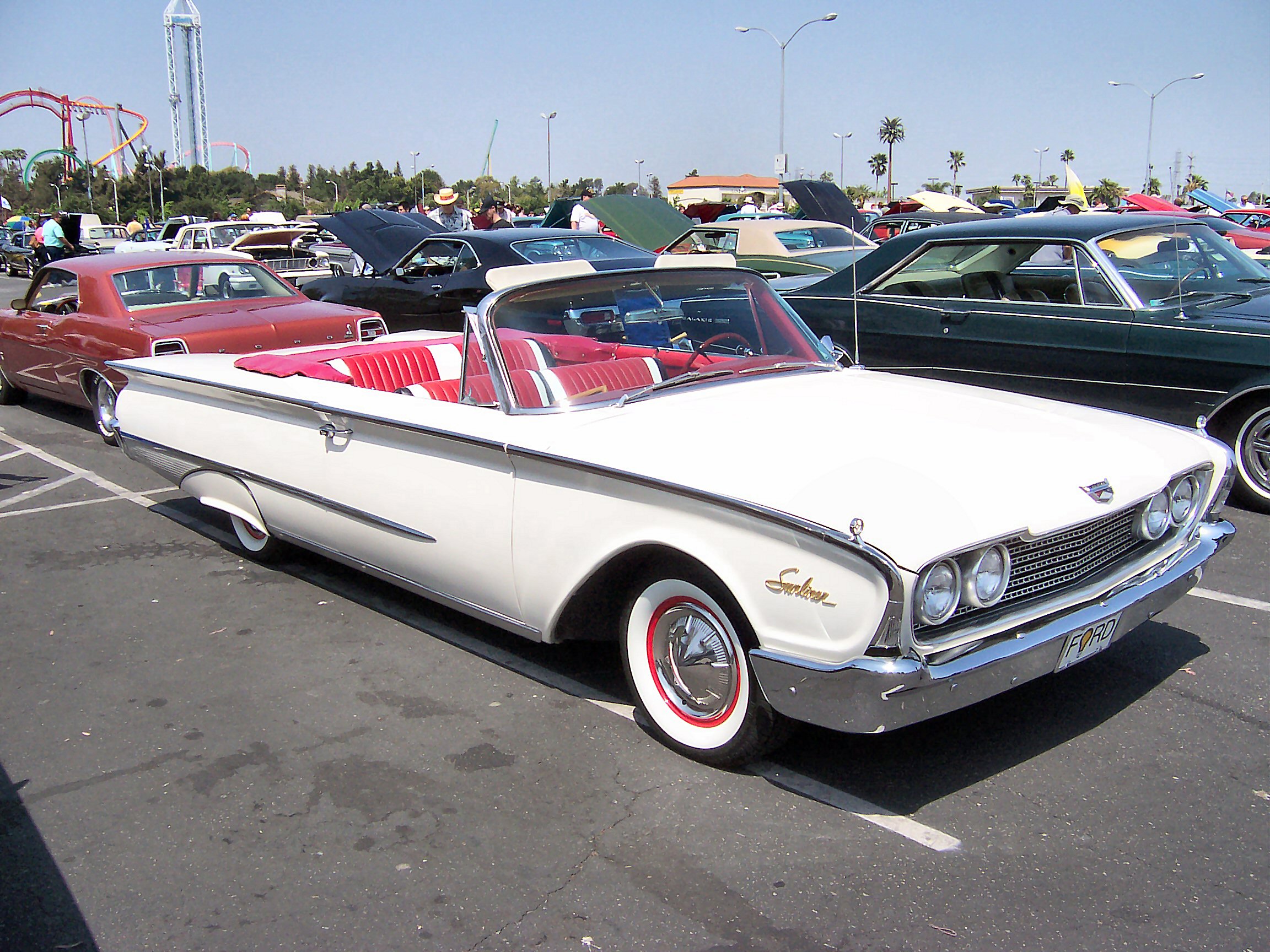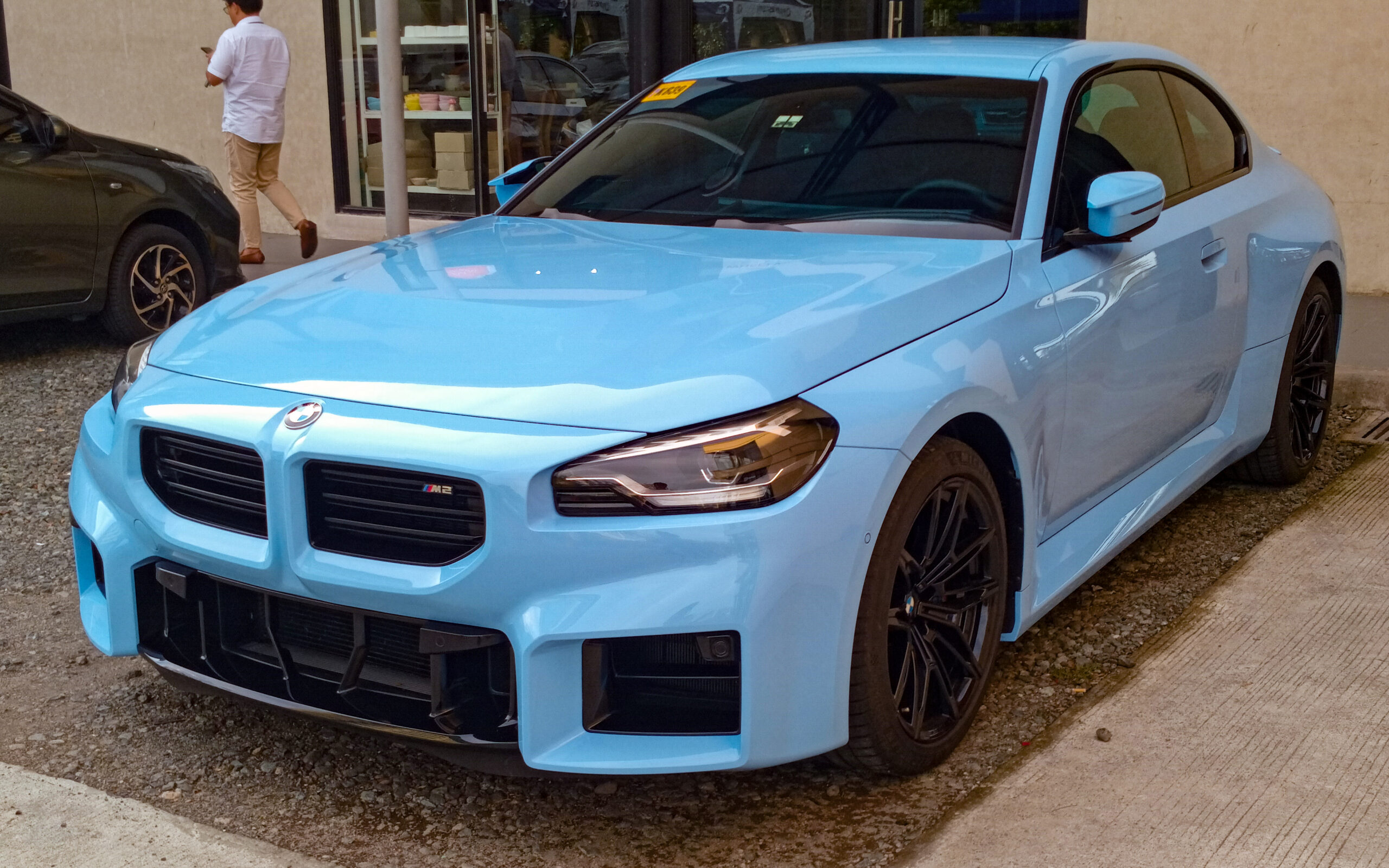
Remember when you’d flip through car magazines or spot that dream ride cruising down the street, thinking, ‘Someday, I’ll own one of those!’? It’s funny how time, and automotive engineering, has a way of changing our minds. Cars that once symbolized freedom, innovation, or sheer cool factor often transform into relics we’d rather admire from afar than, you know, actually *drive*.
We’re talking about those rides that were absolutely everywhere – the ones that packed parking lots and dominated city blocks, becoming almost impossible to miss. They were the talk of the town, staples in our daily commutes, or the cars that defined an entire era. Yet, if you try to spot one today, you might go months without catching a glimpse. They’ve quietly, and in some cases, rather thankfully, faded from the spotlight.
So, buckle up (safely, unlike some of these!), because we’re about to take a wild ride back in time. We’ll shine a light on some of the models that captured our hearts back then, but for a whole host of very real, very modern reasons, have become cars we wouldn’t want to be caught dead driving now. Get ready for some serious automotive nostalgia, mixed with a healthy dose of ‘oh, thank goodness cars have improved!’
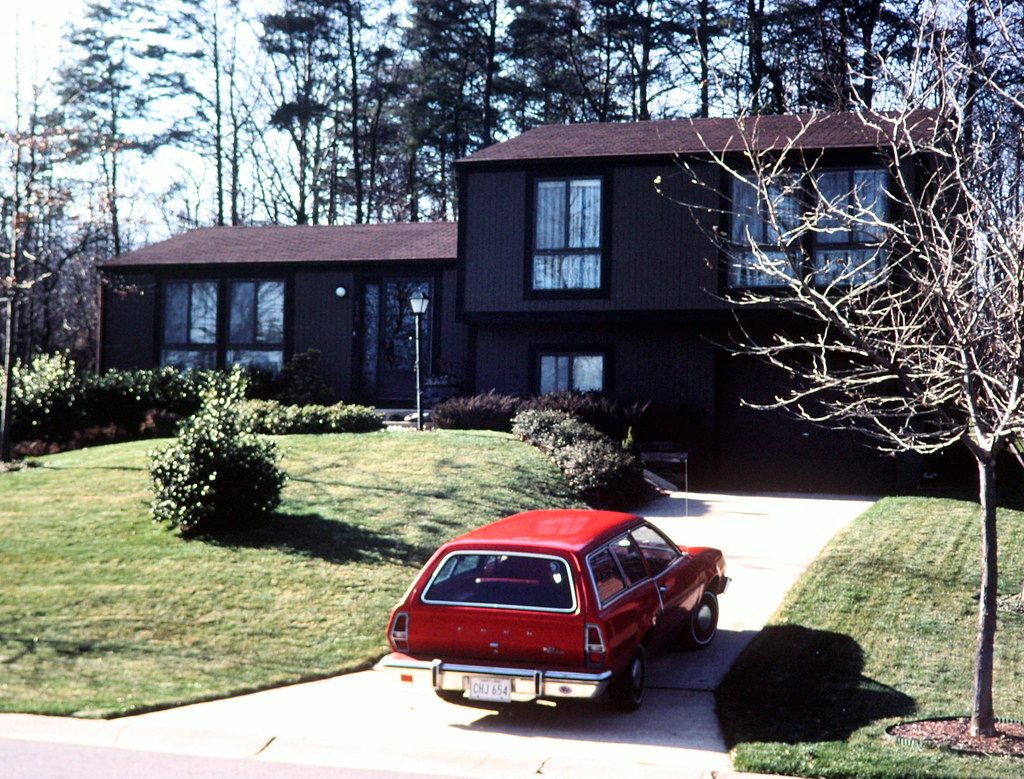
1. **Ford Pinto**Compact and undeniably cheap, the Ford Pinto was practically everywhere during the 1970s. It quickly became a staple for commuters looking for an economical ride, with over 3 million units hitting the roads between 1971 and 1980. It was the quintessential ‘get from A to B’ car, and for its time, it offered an accessible entry point into car ownership for countless American families.
However, the Pinto’s legacy is unfortunately overshadowed by high-profile fuel tank fire cases that severely tarnished its reputation. These safety concerns led to widespread negative attention and, understandably, made its popularity dim considerably. The sheer volume of Pintos initially sold meant they were a common sight, but the very real dangers associated with its design became impossible to ignore.
Today, you’d be hard-pressed to find a Ford Pinto still on American roads, and frankly, that’s probably for the best. Age and those serious safety concerns have pushed most of them off the asphalt for good. While it served its purpose as a cheap commuter car in its heyday, the risk factors make it a definite ‘no, thank you’ for modern driving.
Car Model Information: 1980 Ford Pinto WAGON
Name: Ford Pinto
Caption: Ford Pinto
Manufacturer: Ford Motor Company
Aka: Mercury Bobcat
Production: September 1970 – July 1980
ModelYears: 1971–1980 (Pinto),1974–1980 (Bobcat)
Assembly: Edison, New Jersey,Milpitas, California
Designer: Robert Eidschun (1968)
Class: Subcompact car
BodyStyle: Sedan (automobile),sedan delivery,station wagon,hatchback
Related: #Mercury Bobcat (1974–1980),Ford Mustang (second generation)
Layout: Front-engine, rear-wheel-drive layout
Chassis: Unibody
Engine: unbulleted list
Abbr: on
Disp: Ford Cologne engine
Transmission: unbulleted list
Wheelbase: 94.0 in
Length: 163 in
Width: 69.4 in
Height: 50 in
Weight: convert
Predecessor: Ford Cortina#Mark II (1966–1970)
Successor: Ford Escort (North America)
Categories: 1980s cars, Articles with short description, Cars discontinued in 1980, Cars introduced in 1970, Commons category link from Wikidata
Summary: The Ford Pinto is a subcompact car that was manufactured and marketed by Ford Motor Company in North America from 1970 until 1980. The Pinto was the first subcompact vehicle produced by Ford in North America.
The Pinto was marketed in three body styles throughout its production: a two-door fastback sedan with a trunk, a three-door hatchback, and a two-door station wagon. Mercury offered rebadged versions of the Pinto as the Mercury Bobcat from 1975 until 1980 (1974–1980 in Canada). Over three million Pintos were produced over its ten-year production run, outproducing the combined totals of its domestic rivals, the Chevrolet Vega and the AMC Gremlin. The Pinto and Mercury Bobcat were produced at Edison Assembly in Edison, New Jersey, St. Thomas Assembly in Southwold, Ontario, and San Jose Assembly in Milpitas, California.
Since the 1970s, the safety reputation of the Pinto has generated controversy. Its fuel-tank design attracted both media and government scrutiny after several deadly fires occurred when the tanks ruptured in rear-end collisions. A subsequent analysis of the overall safety of the Pinto suggested it was comparable to other 1970s subcompact cars. The safety issues surrounding the Pinto and the subsequent response by Ford have been cited widely as business ethics and tort reform case studies.
Get more information about: Ford Pinto
Buying a high-performing used car >>>
Brand: Ford Model: Pinto
Price: $5,951 Mileage: 107,000 mi.
Read more about: Over 300,000 Vehicles Recalled: A Comprehensive Guide to Recent Safety Notices from Range Rover, Ford, and Nissan
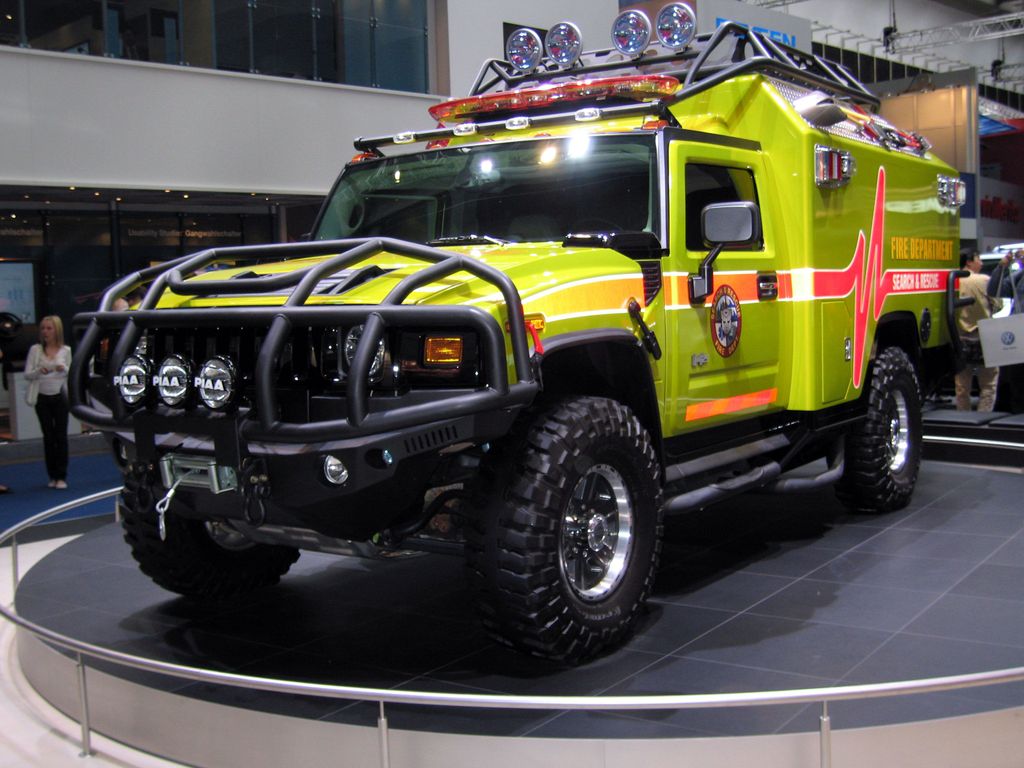
2. **Hummer H2**If the early 2000s had a spirit animal, it might very well have been the Hummer H2. This vehicle wasn’t just big; it was a symbol of excess, pure and simple. Its massive, boxy frame and imposing presence screamed ‘I’ve arrived!’ and for a time, that was exactly the statement many wanted to make. It came powered by a V8 engine, which, given its weight, was absolutely necessary to move it down the road.
Weighing in at over 6,000 pounds, the Hummer H2 was notoriously unapologetic about its gasoline consumption. It guzzled fuel with abandon, and in an era of relatively stable gas prices, this wasn’t a deal-breaker for its eager buyers. It was about the image, the status, and the sheer audacity of driving something so over-the-top.
But as quickly as it rose to prominence, the H2’s fate was sealed by rising fuel prices and a growing public backlash against such blatant gas guzzlers. Environmental concerns and a shift in consumer sentiment meant that its moment in the sun was fleeting. The final H2 rolled off the assembly line in January 2009, marking the end of an era for unapologetic automotive excess. Driving one now would feel less like a statement and more like a relic of unsustainable past.
Car Model Information: 2003 Hummer H2 Base
Name: Hummer H2
Manufacturer: AM General
Production: 2002–2009
ModelYears: 2003–2009
Assembly: Mishawaka, Indiana,Kaliningrad,designer = Clay Dean (2000)
Class: Full-size SUV
BodyStyle: Sports utility vehicle,pickup truck
Platform: GMT800
Related: Chevrolet Silverado,Chevrolet Avalanche,Chevrolet Tahoe,Chevrolet Suburban,Cadillac Escalade
Layout: Front-engine, four-wheel-drive layout,four-wheel drive
Engine: General Motors LS-based small-block engine#LQ4
Transmission: 4L60E,4-speed 4L65E automatic (2005–2007),automatic transmission
Wheelbase: 122.8 in
Abbr: on – 6.2 L
Length: 203.5 in
Width: 81.3 in
Height: 2002–03: {{convert,77.8,in,mm,0,abbr=on
Weight: {{convert,6400,lb,kg,0,abbr=on
Categories: 2000s cars, AM General vehicles, All-wheel-drive vehicles, All articles needing additional references, Articles needing additional references from January 2024
Summary: The Hummer H2 is a full-size off-road sport utility vehicle (SUV) that was marketed by Hummer and built in the AM General facility under contract from General Motors from 2002 until 2009. It is based on a modified GMT820 GM three-quarter-ton pickup truck in the front and a half-ton 1500 frame in the rear. A four-door pickup truck version with a midgate that opens the vehicle’s interior to the external cargo bed was introduced for the 2005 model year as the H2 SUT (sport utility truck).
Get more information about: Hummer H2
Buying a high-performing used car >>>
Brand: Hummer Model: H2
Price: $13,980 Mileage: 152,679 mi.
Read more about: The Maserati MC12: A Deep Dive into the Genesis, Engineering, and Racing Triumphs of a Rare Automotive Masterpiece
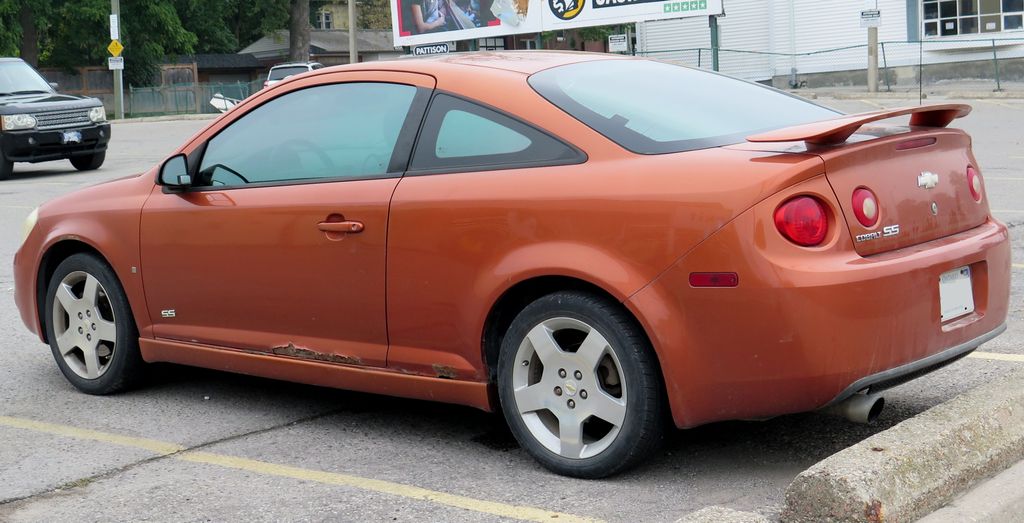
3. **Chevrolet Cobalt**The Chevrolet Cobalt made its debut in 2005, stepping into the rather large shoes left by the aging Cavalier. It quickly found its footing, offering consumers a choice between sedan and coupe forms, and even boasted SS supercharged editions that, to this day, still draw praise from enthusiasts. It was a straightforward, modern compact car designed to offer a reliable and affordable driving experience for the masses.
For a few years, the Cobalt was a perfectly respectable contender in the compact car market. It did its job, got people around, and the SS variants even offered a fun, peppy ride for those looking for a bit more excitement. It was a common sight on roads across America, representing a solid, if not thrilling, option for daily drivers.
However, the Cobalt’s production run came to an abrupt and unfortunate end in 2010. Its reputation was irrevocably damaged by a massive ignition switch recall, a serious safety flaw that led to a significant public outcry. This recall effectively sealed its fate, pushing it out of production and off the list of desirable used cars. Despite any earlier praise, the shadow of that recall makes it a car few would willingly choose to drive today.
Car Model Information: 2007 Chevrolet Cobalt SS
Name: Chevrolet Cobalt
Manufacturer: General Motors
Production: 2004–2010,2011–present
ModelYears: 2005–2010 (North America),2011–present
Class: Compact car
Layout: Front-engine, front-wheel-drive layout
Predecessor: Geo/Chevrolet Prizm
Successor: Chevrolet Cruze
Categories: 2010s cars, All Wikipedia articles written in American English, All articles with unsourced statements, Articles with Uzbek-language sources (uz), Articles with short description
Summary: The Chevrolet Cobalt is a compact car introduced by Chevrolet in 2004 for the 2005 model year. The Cobalt replaced both the Cavalier and the Toyota-based Geo/Chevrolet Prizm as Chevrolet’s compact car. The Cobalt was available as both a coupe and sedan, as well as a sport compact version dubbed the Cobalt SS. Like the Chevrolet HHR and the Saturn ION, it was based on the GM Delta platform.
A Pontiac version was sold in the United States and Mexico under the G5 name for 2007–2009. It was sold as the Pontiac G4 in Mexico for 2005–2006 and as the Pontiac G5 in Canada for its entire run (where it was briefly known as the Pontiac Pursuit and later Pontiac G5 Pursuit). The G5 replaced the Cavalier-related Pontiac Sunfire. While the Cobalt was available as a 2-door coupe and a 4-door sedan in all markets it was offered in, the G5 was only available as a coupé in the United States while a sedan version was sold alongside the coupé in Canada and Mexico.
As with their predecessors, all Cobalts and its Pontiac equivalents were manufactured at GM’s plant in Ramos Arizpe, Mexico and Lordstown, Ohio. The United States Environmental Protection Agency classified the Cobalt as a subcompact car.
Get more information about: Chevrolet Cobalt
Buying a high-performing used car >>>
Brand: Chevrolet Model: Cobalt
Price: $9,750 Mileage: 93,000 mi.
Read more about: From Roaring V8s to Silent Thunder: The Electrifying Evolution of American Muscle Cars

4. **AMC Gremlin**When AMC’s Gremlin made its grand debut on April Fool’s Day in 1970, it arrived with a rather cheeky attitude and a distinctly chopped Hornet body. Its quirky, compact design was met with surprising success, particularly during the energy crisis of the 1970s. Its small size and perceived fuel efficiency made it an appealing option when gasoline prices started to bite.
For a time, the Gremlin was a noticeable presence on American roads, embodying a different approach to car design and a response to the changing automotive landscape. It certainly stood out from the crowd, and its no-nonsense, economical stance resonated with many drivers looking for something practical and affordable.
Yet, the Gremlin, much like many cars of its era, largely vanished from roads by the late 1980s. The primary culprits were rust issues and aging drivetrains, common problems for vehicles built with less advanced corrosion protection and mechanical longevity than modern cars. While it might hold a certain retro charm for enthusiasts, the practical realities of owning and maintaining a rusty, unreliable Gremlin today make it a definite candidate for the ‘loved back then, wouldn’t drive now’ list.
Read more about: 16 Legendary Car Flops: The Vehicles Nobody Wanted
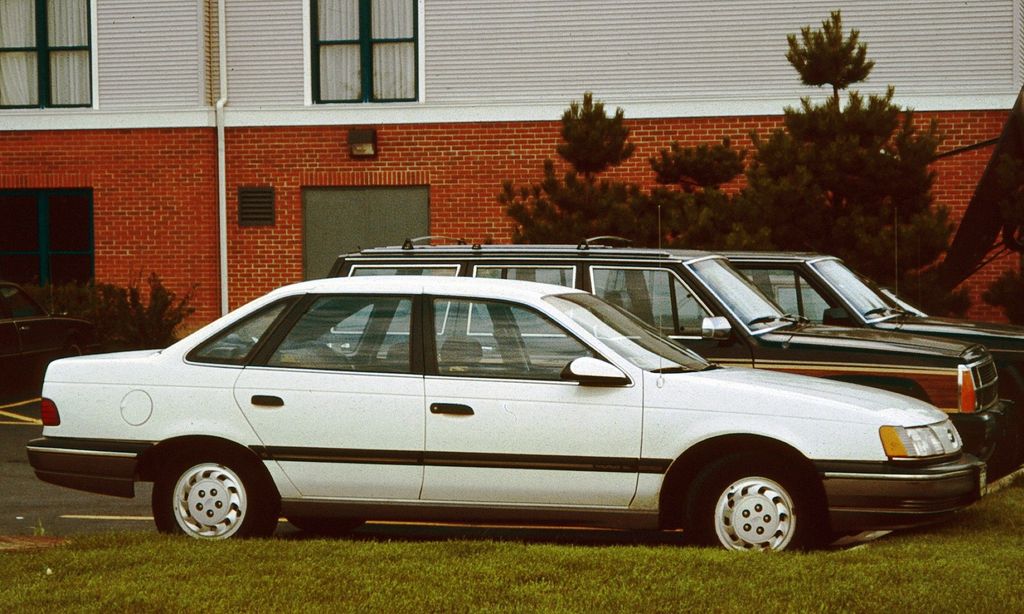
5. **Ford Taurus (Early Models)**When the Ford Taurus first launched in 1986, it was nothing short of a revolution in sedan design. Its smooth curves and front-wheel drive layout were a stark departure from the boxy, traditional designs that dominated the market, truly setting a new standard for American family cars. It quickly became America’s best-selling car in the early 1990s, defining a generation of sensible, stylish transportation.
The first and second-generation Tauruses were ubiquitous; you couldn’t go anywhere without seeing one. They were the epitome of the modern family sedan, offering a comfortable ride, practical space, and a forward-thinking design that seemed to promise a brighter automotive future. Millions of families relied on them for everything from daily commutes to cross-country road trips.
Today, however, spotting a first- or second-generation Taurus is a genuinely rare event. The primary reasons for their disappearance are widespread rust issues, which afflicted many cars of that era, and simply design obsolescence. While revolutionary for its time, its styling and technology have been vastly surpassed by modern vehicles, making it feel incredibly dated and unreliable for contemporary driving. The rust alone is enough to deter most.
Car Model Information: 2018 Ford Taurus Limited
Name: Ford Taurus
Caption: 2010 Ford Taurus Limited
Manufacturer: Ford Motor Company
Production: October 1985 – October 2006,May 2007 – March 2019
ModelYears: 1986–2019 (2007 sold only to fleets)
Class: Mid-size car
Layout: Transverse engine,front-engine, front-wheel drive,Transverse engine,front-engine, all-wheel drive
Predecessor: Ford LTD (North America)
Successor: Ford Taurus X
Categories: 1980s cars, 1990s cars, 2000s cars, 2010s cars, All-wheel-drive vehicles
Summary: The Ford Taurus is an automobile that was manufactured and marketed by the Ford Motor Company in the United States from 1985 to 2019. From 1985 to 2009, Ford marketed the Taurus alongside its rebadged variant, the Mercury Sable. Four generations of the high-performance version (named the Ford Taurus SHO) were also manufactured from 1988-1999 and 2009-2019.
The original Taurus was a milestone for Ford and the American automotive industry, as the first automobile at Ford designed and manufactured using the statistical process control ideas brought to Ford by W. Edwards Deming, a prominent statistician consulted by Ford to bring a “culture of quality” to the enterprise. The Taurus had an influential design that introduced new features and innovations.
In the late 1990s and early 2000s, sales of the Taurus declined as it lost market share to Japanese mid-size sedans and as Ford shifted resources towards developing SUVs. The Taurus was withdrawn after the 2007 model year, with production ending on October 27, 2006. As part of a model line revision, the Taurus and the larger Ford Crown Victoria were to be replaced with the full-size Five Hundred and mid-size Fusion sedans; the Taurus station wagon was replaced with the Ford Freestyle wagon, branded as a crossover SUV. During the 2007 Chicago Auto Show, the nameplates of the Taurus and Sable were revived, intended as 2008 mid-cycle revisions of the Five Hundred. The Freestyle was renamed the Ford Taurus X. For the 2010 model year, Ford introduced the sixth-generation Taurus, marking a more substantial model update, alongside the revival of the Taurus SHO; in 2013, the Ford Police Interceptor Sedan was introduced as a successor for its long-running Crown Victoria counterpart.
From 1985 to 2007, the Taurus was a mid-size car, offering front-wheel drive. Initially built on the DN5 platform (renamed the DN101 platform in 1995 and the D186 platform in 1999), the Taurus became a full-size car in 2007, adopting the Volvo-derived D3 platform, offering front- or all-wheel drive. The Taurus was produced as a four-door sedan through its entire production, with a five-door station wagon offered from 1986 to 2005.
All generations of the Taurus were assembled by Chicago Assembly on Chicago’s South Side. Prior to its 2006 closure, Atlanta Assembly also produced both the Taurus and Sable. From its 1985 launch to its initial withdrawal following the 2007 model year, Ford assembled 7,519,919 examples of the Taurus. The fifth best-selling Ford nameplate in North America, the Taurus has been surpassed only by the F-Series, Escort, Model T, and Mustang. Between 1992 and 1996, the Taurus was the best-selling car nameplate in the United States, overtaken by the current title holder in 1997, the Toyota Camry.
Get more information about: Ford Taurus
Buying a high-performing used car >>>
Brand: Ford Model: Taurus
Price: $17,317 Mileage: 92,680 mi.
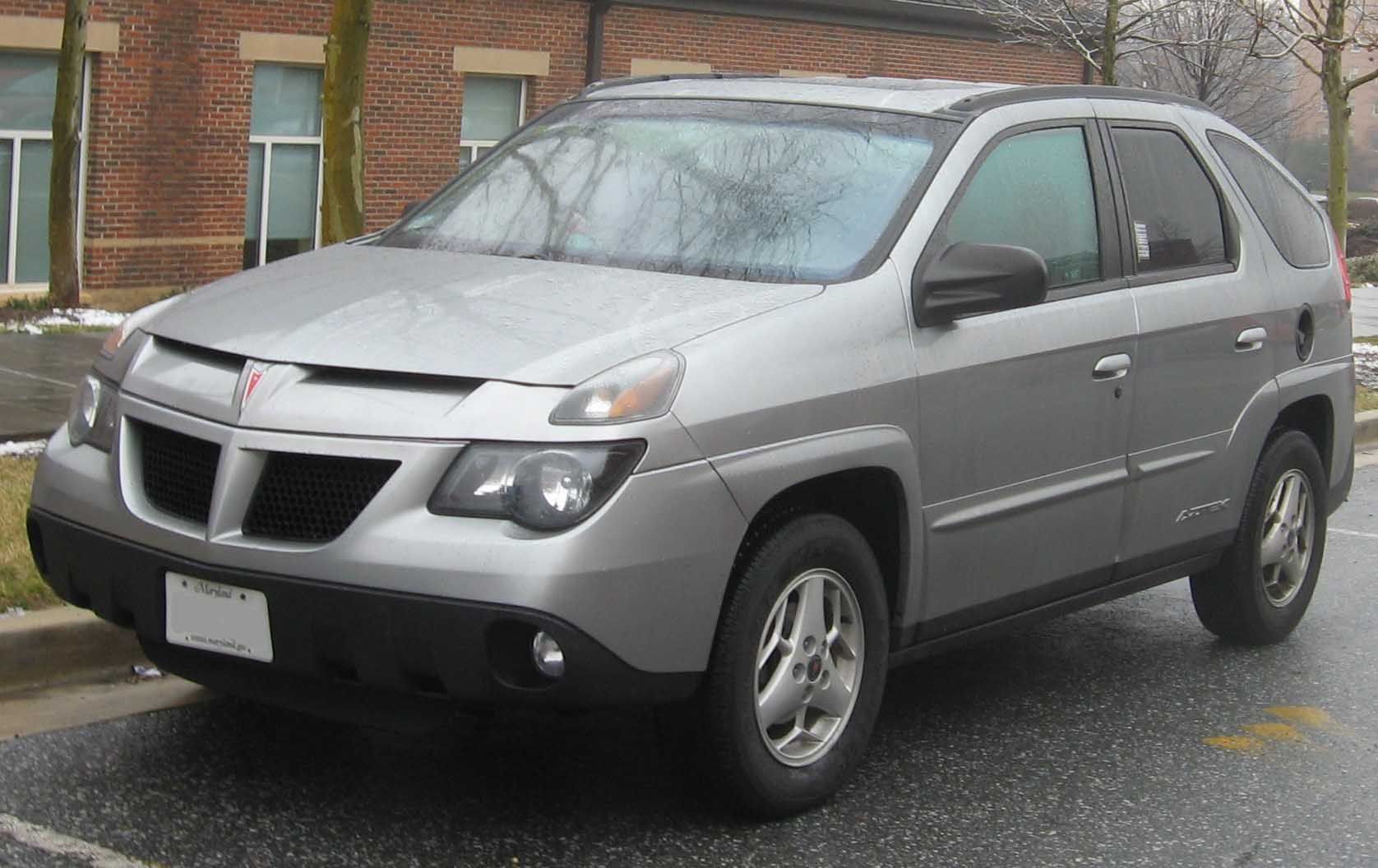
6. **Pontiac Aztek**Ah, the Pontiac Aztek. This crossover, launched in 2001, was a bold attempt to blend the ruggedness of an SUV with the practicality of a minivan. It was designed to be versatile, offering features like a pull-out cargo tray and an attachable tent. Its distinctive, blocky styling – which some might politely call ‘bold’ – certainly made it memorable, not least from its prominent role in TV shows like ‘Breaking Bad’.
The Aztek aimed to be a do-it-all vehicle for the adventurous family, and Pontiac certainly poured a lot of innovative ideas into its concept. It was an early pioneer in the crossover segment, a vehicle type that would eventually dominate the market. For its target demographic, it promised utility and a unique look that stood out from the sea of more conventional vehicles.
Despite its innovative spirit, the Aztek suffered from notoriously poor sales during its production run, which ended in 2005. Its polarizing design was widely criticized, and it never truly found its stride with the broader public. While it might have sparked ideas that influenced today’s more successful CUVs, the Aztek itself remains a challenging aesthetic and a practical question mark. Driving one now would be an act of either extreme irony or genuine historical curiosity, certainly not a choice for comfort or cool factor.
Car Model Information: 2004 Pontiac Aztek 4dr All Purpose FWD
Name: Pontiac Aztek
Manufacturer: General Motors
Production: July 2000 – December 2004
Assembly: Ramos Arizpe
Designer: Tom Peters (chief designer: 1997)
Class: Mid-size crossover SUV
BodyStyle: SUV
Platform: GM U platform
Related: Buick Rendezvous
Layout: Front-engine, front-wheel-drive layout
Engine: General Motors 60° V6 engine#LA1,V6
Transmission: GM 4T65-E transmission,Automatic transmission
Wheelbase: 108.3 in (2,751 mm)
Length: 182.1 in (4,625 mm)
Width: 73.7 in (1,872 mm)
Height: 66.7 in (1,694 mm)
Weight: 3,779–4,043 lb (1,714–1,834 kg)
Predecessor: Pontiac Sunrunner
Successor: Pontiac Torrent
ModelYears: 2001–2005
Categories: All-wheel-drive vehicles, All articles needing additional references, All articles with unsourced statements, Articles needing additional references from October 2013, Articles with short description
Summary: The Pontiac Aztek is a mid-size crossover SUV marketed by General Motors introduced in 2000 for the model years 2001 through 2005. As a four-door crossover with front-wheel drive and optional all-wheel drive, the Aztek featured a four-speed automatic transmission with a V6 engine. Marketed by Pontiac as a “sport recreational vehicle,” the Aztek used a shortened platform shared with GM’s minivans (e.g., the Pontiac Montana) featuring 94 cubic feet of cargo room with its rear seats removed. The design employed conventional rear outswing doors rather than sliding doors, and a split rear tailgate, the lower section formed with seat indentations and cupholders. Other features included a front center console that doubled as a removable cooler, optional rear stereo controls in the cargo area, optional sliding cargo floor with grocery compartments, and optional camping package with an attachable tent and air mattress.
Get more information about: Pontiac Aztek
Buying a high-performing used car >>>
Brand: Pontiac Model: Aztek
Price: $995 Mileage: 0 mi.
Read more about: Buyer’s Remorse: 15 Cars Drivers Wished They Never Bought
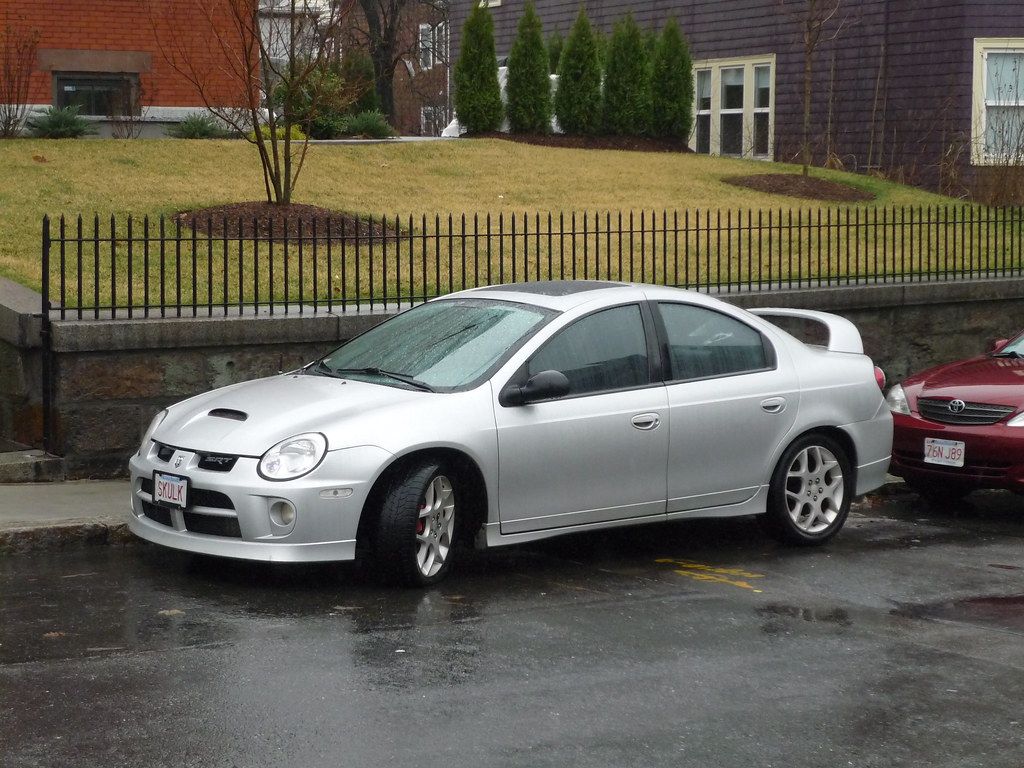
7. **Dodge Neon**When the Dodge Neon burst onto the scene in 1994, it arrived with an ambitious promise: ‘Hi’ performance at a low price. And for many young drivers, it delivered. This compact car, which wore both Dodge and Plymouth badges early on, quickly won over countless buyers looking for an affordable, peppy, and surprisingly fun-to-drive vehicle. It was the entry-level hero, a car that made new car ownership accessible.
The Neon’s appeal was its no-frills, straightforward approach to motoring, combined with a sprightly engine that made it feel more engaging than its price tag suggested. It was easy to maneuver, relatively efficient for its time, and proved to be a popular choice for students, first-time buyers, and anyone needing dependable, budget-friendly transportation. It truly was the little car that could, in the right hands.
By 2005, however, the Neon’s run was officially discontinued. It was phased out to make way for the Dodge Caliber, a vehicle described in retrospect as ‘less charming but more refined.’ This transition signaled the Neon’s obsolescence. Today, an original Dodge Neon feels dated in terms of safety, technology, and overall refinement. While it delivered on its initial promise, modern standards have simply left it behind, making it a car you wouldn’t want to rely on today. Its low-cost origins mean few were preserved well, and the driving experience simply doesn’t hold up.”
Alright, so we’ve journeyed through the first batch of cars that had their moment in the sun but now barely see the light of day. But hold on, our nostalgic road trip isn’t over yet! Get ready to dive even deeper into the automotive archives, because we’ve got seven more rides that, for various reasons from their sheer scale to their brand literally disappearing, just don’t quite cut it in today’s fast-paced world.
Car Model Information: 2000 Dodge Neon Highline
Name: Chrysler/Dodge/Plymouth Neon
Manufacturer: Chrysler,Mercedes-Benz Group,Fiat Chrysler Automobiles
Production: November 1993,2016–2021
ModelYears: 1995–2005,2017–2020
Class: Compact car
Layout: Front-engine, front-wheel-drive layout
Platform: Chrysler PL platform
Predecessor: Dodge Colt,Dodge Shadow,Plymouth Laser
Successor: Dodge Caliber
Aka: Chrysler Neon,Dodge Neon,Plymouth Neon (1995–2001),Dodge SX 2.0 (Canada),Dodge SRT-4 (2003–2005)
Related: Dodge SRT-4,Chrysler PT Cruiser
Categories: 2000s cars, 2010s cars, All articles needing additional references, All articles that may contain original research, All articles with unsourced statements
Summary: The Neon is a compact car built from November 1993 until 2005 by the American Chrysler Corporation over two generations. It has a front-engine, front-wheel-drive layout and was available in two-door and four-door sedan body styles. In the United States and Canada, it was sold as either a Dodge or a Plymouth (except for the 2001–2003 model years in Canada, when it was branded as a Chrysler), while in Europe, Mexico, Japan, South Korea, Egypt, Australia, South Africa, and South America, it was branded as a Chrysler.
The Neon was offered in multiple versions and configurations over its production life, which lasted from the 1995 model year until 2005. The Neon nameplate was subsequently resurrected in 2016 for the Dodge Neon, a rebadged variant of the Fiat Tipo sedan for the Mexican market.
Get more information about: Chrysler Neon
Buying a high-performing used car >>>
Brand: Dodge Model: Neon
Price: $7,995 Mileage: 20,150 mi.
Read more about: Dodge’s Commercial Failures: 18 Cars That Flopped
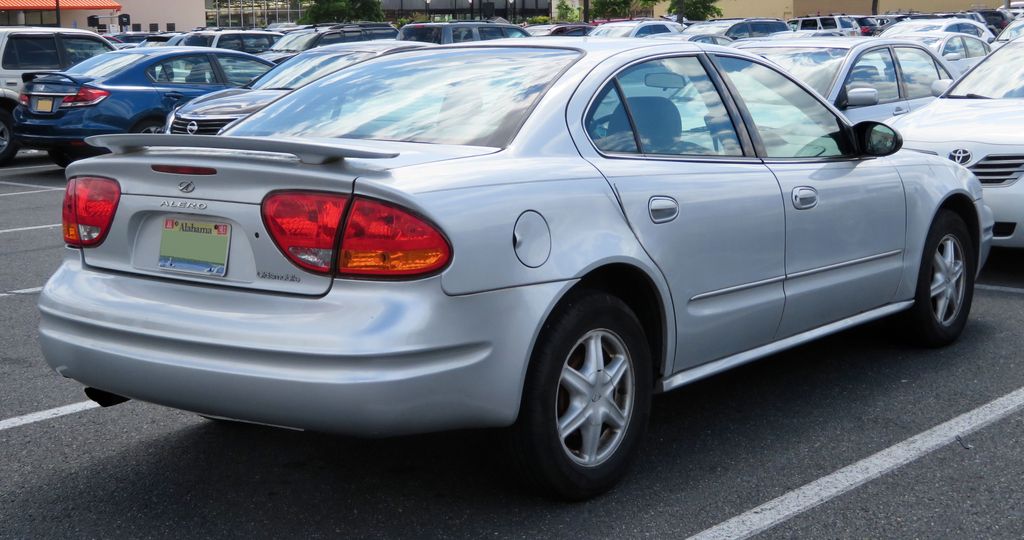
8. **Oldsmobile Alero**Remember when the 1999 Oldsmobile Alero was the go-to for families? It was all about roomy interiors and affordable prices, making it quite the hit. This car was a dependable workhorse, a staple for many households looking for practical, no-nonsense transportation that wouldn’t break the bank. For a brand that was heading towards its grand finale, the Alero really put in the effort, soldiering on and becoming a common sight in suburban driveways and school drop-off lines.
But here’s the kicker: the Alero holds a rather bittersweet place in history. It was the very last car to wear an Oldsmobile badge, rolling off the assembly line right before the brand shut down completely in 2004. So, while it was once a symbol of everyday reliability, it also marked the end of an automotive era. It was Oldsmobile’s final bow, a car that closed the curtain on a long-standing American marque.
Today, driving an Oldsmobile Alero isn’t just about dealing with an older car; it’s a stark reminder of a brand that simply doesn’t exist anymore. With no new models or active dealerships, parts and specialized service can be a real headache. Plus, let’s be real, its technology and safety features are a far cry from what we expect in modern vehicles, making it far less appealing than its contemporary counterparts.
Car Model Information: 2004 Oldsmobile Alero GLS
Name: Oldsmobile Alero
Manufacturer: Oldsmobile
Aka: Chevrolet Alero (Europe and Israel)
Production: April 1998 – April 29, 2004
ModelYears: 1999–2004
Assembly: Lansing Car Assembly,Lansing, Michigan
Class: Compact car
BodyStyle: coupe
Platform: GM N platform
Related: Chevrolet Malibu#Fifth generation (1997),Oldsmobile Cutlass#Sixth,Pontiac Grand Am#1999.E2.80.932005
Layout: Front-engine, front-wheel-drive layout
Engine: GM Ecotec engine#L61,Straight-4
Transmission: Getrag F23 transmission,Manual transmission
Wheelbase: 107 in
Abbr: on
Length: 186.7 in
Width: 70.1 in
Height: 54.5 in
Weight: convert
Predecessor: Oldsmobile Achieva
Successor: Chevrolet Evanda
Categories: 2000s cars, All articles needing additional references, Articles needing additional references from April 2019, Articles needing additional references from June 2022, Articles with short description
Summary: The Oldsmobile Alero is a compact car that was produced by General Motors for its Oldsmobile division. Introduced in 1998 as a 1999 model, the Alero was the replacement for both the Achieva and Cutlass. The Alero was Oldsmobile’s last new model nameplate, and — on April 29, 2004 — was also the last Oldsmobile manufactured.
Get more information about: Oldsmobile Alero
Buying a high-performing used car >>>
Brand: Oldsmobile Model: Alero
Price: $2,436 Mileage: 198,348 mi.
Read more about: Unleashing the Beasts: The 10 Rarest American Cars of the 1990s – Muscle, Innovation, and Collectible Icons
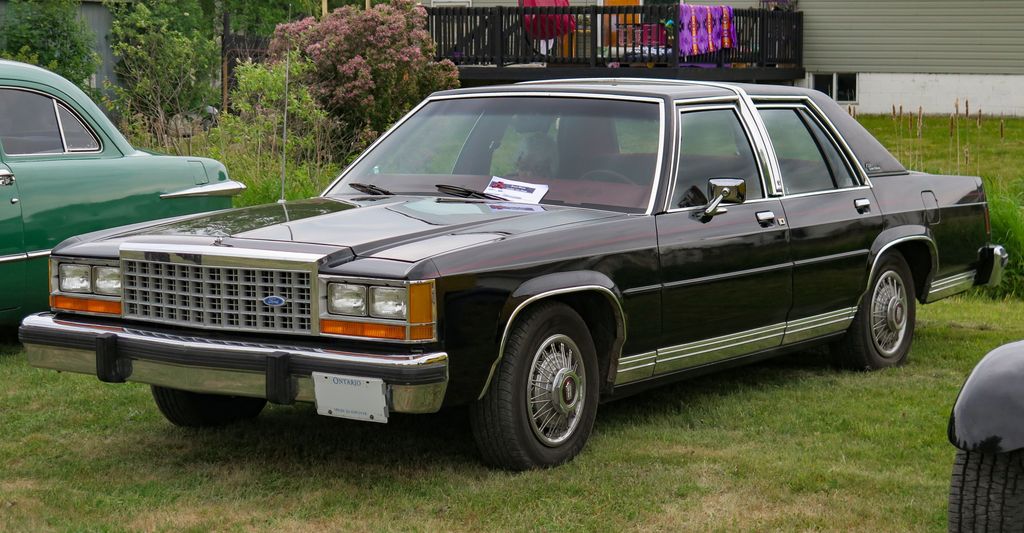
9. **Ford Crown Victoria**Oh, the Ford Crown Victoria – the undisputed king of patrol cars and taxi cabs between 1992 and 2011! This behemoth wasn’t just big; it was a rugged, V8-powered workhorse that practically defined fleet vehicles across America. You couldn’t turn a corner without seeing one, whether it was chasing down bad guys or taking you to the airport. It truly reigned supreme, a testament to its durability and no-frills dependability in demanding service.
The Crown Vic was so beloved by its fleet operators that Ford kept building it long after its design became, shall we say, ‘classic.’ Its final production run wrapped up at Ford’s St. Thomas Assembly Plant in Ontario, a facility that, tellingly, also closed its doors for good right after the last Crown Vic rolled out. It was a car synonymous with an entire segment of professional driving, a true icon of its particular niche.
However, for everyday driving, the Crown Victoria has become quite the impractical choice. Its massive size makes parking a nightmare, and its V8 engine, while rugged, is notoriously thirsty, a serious wallet-drainer with today’s fuel prices. Plus, let’s not forget the unavoidable ‘cop car’ or ‘taxi’ aura it still carries – driving one now might make other drivers instinctively slow down or just assume you’re on duty.
Car Model Information: 2024 Genesis GV70 2.5T AWD
Name: Ford Crown Victoria
Caption: 1998–2002 Ford Crown Victoria LX
Manufacturer: Ford Motor Company
Production: January 1991 – September 15, 2011
ModelYears: 1992–2012
Assembly: Talbotville, Southwold, Ontario
Class: Full-size car
BodyStyle: Sedan (automobile)
Platform: Ford Panther platform
Layout: Front-engine, rear-wheel drive layout,body-on-frame
Predecessor: Ford LTD Crown Victoria
Categories: 2000s cars, 2010s cars, All Wikipedia articles in need of updating, All articles needing additional references, All articles with dead external links
Summary: The Ford Crown Victoria (“Crown Vic”) is a full-size sedan that was marketed and manufactured by Ford. The successor to the Ford LTD Crown Victoria, two generations of the model line were produced from the 1992 until the 2012 model years. The Ford counterpart of the Mercury Grand Marquis, the Crown Victoria was the largest sedan marketed by Ford in North America, slotted above the Ford Taurus. The Crown Victoria Police Interceptor (1992–2011) was marketed specifically for law-enforcement use; a long-wheelbase Crown Victoria sedan (2002–2011) was marketed primarily for taxi cab fleets.
The Crown Victoria was produced on the rear-wheel drive, body-on-frame Ford Panther platform, sharing its chassis with the Grand Marquis and Lincoln Town Car. From 1997 until their 2011 discontinuation, the three model lines were the sole four-door sedans produced in North America with a full-length frame, rear-wheel drive, and a standard V8 engine. While the front and rear crumple zones were engineered into the vehicle, it was one of Ford’s products that were not of unibody construction for the entire generation. The Crown Victoria was the last car made using the Ford Panther platform.
For its entire production, the Crown Victoria was produced by Ford Canada alongside the Grand Marquis at St. Thomas Assembly in Southwold, Ontario. From 1991 until 2011, over 1.5 million cars (including Police Interceptors) were produced by St. Thomas Assembly prior to its closure. A 2012 Crown Victoria (intended for Middle East export) was the final vehicle produced by the facility. Following the discontinuation of the model line, the Crown Victoria was not directly replaced, with the full-size Ford Taurus serving as the next basis for Ford police cars.
Get more information about: Ford Crown Victoria
Buying a high-performing used car >>>
Brand: Ford Model: Crown Victoria
Price: $39,995 Mileage: 20,074 mi.
Read more about: Is Your Car a ‘Reliability King’? 15 Vehicles That Last for 200000 Miles or More
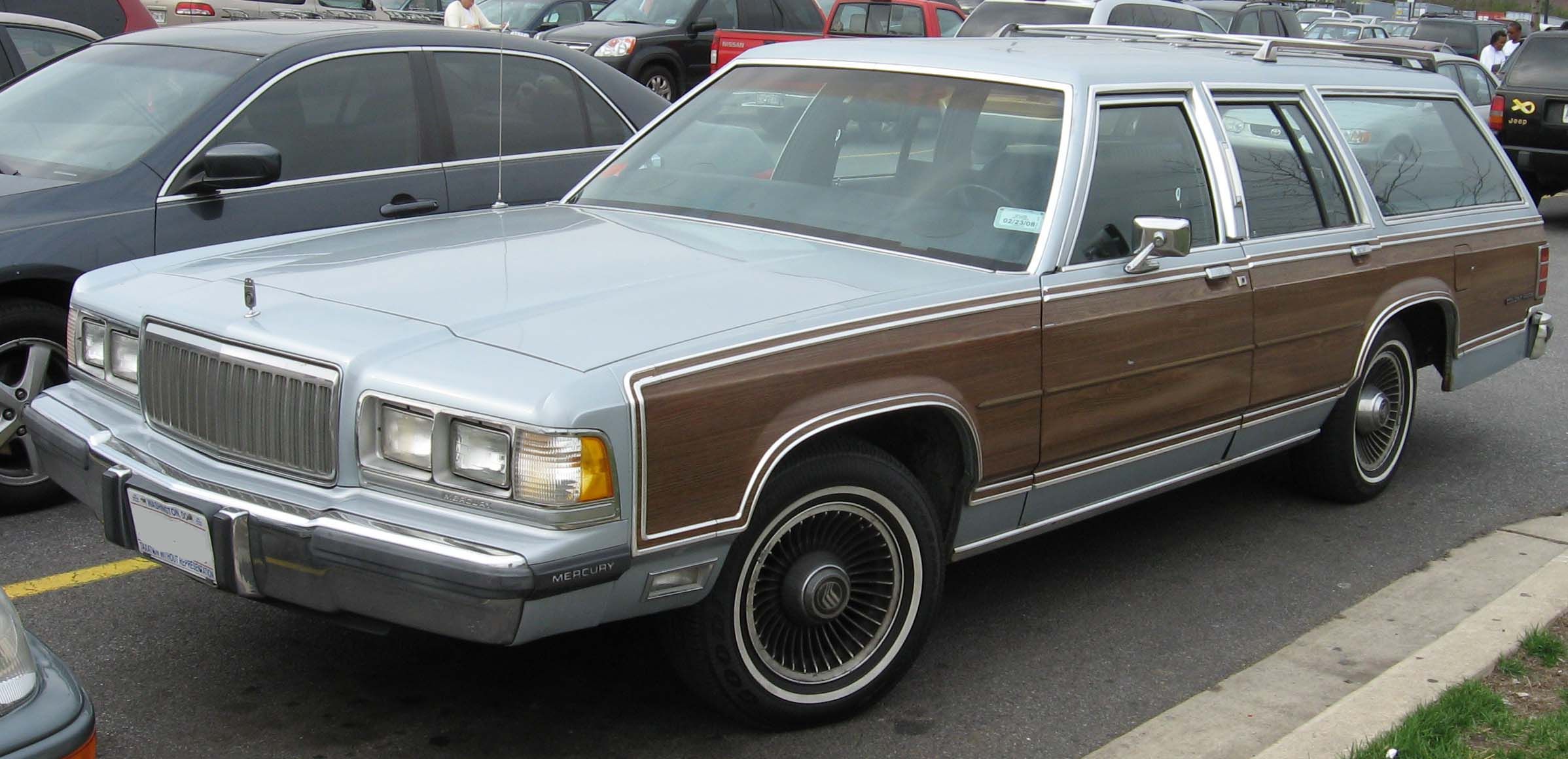
10. **Mercury Grand Marquis**If you wanted old-school comfort and an unapologetically plush ride, the Mercury Grand Marquis was your chariot from 1975 until 2011. This car was a land yacht in the truest sense, designed for Sunday cruises and cross-country treks with maximum relaxation. It was a vehicle that simply glided over the road, offering a level of serene comfort that feels almost alien in today’s more compact, performance-oriented world.
The Grand Marquis was built for a loyal segment of drivers who prioritized spaciousness and a smooth ride above all else. Its exit from the scene wasn’t due to a lack of fans, but rather because the Mercury brand itself was discontinued by Ford after years of declining sales. It was a casualty of broader corporate decisions, taking its particular brand of oversized luxury with it.
Today, while the idea of a plush, comfortable cruiser might sound appealing, the Grand Marquis simply doesn’t fit into modern driving. Its sheer size makes it cumbersome in tight city streets, and its older V8 technology isn’t exactly a paragon of fuel efficiency or responsive handling. It’s a car that screams ‘another era,’ and its outdated features and overall bulk make it a challenge to drive and maintain in the present day.
Car Model Information: 2024 Genesis GV70 2.5T AWD
Name: Mercury Grand Marquis
Caption: 2003-2004 Mercury Grand Marquis
Aka: Ford Grand Marquis (Mexico and Venezuela)
Manufacturer: Mercury (automobile)
ModelYears: 1975–2011
Class: Full-size
Platform: Ford Panther platform
Related: Ford LTD Crown Victoria,Lincoln Town Car
Predecessor: Mercury Marquis
Categories: 1970s cars, 1990s cars, 2000s cars, 2010s cars, All Wikipedia articles written in American English
Summary: The Mercury Grand Marquis is an automobile that was produced by Mercury from the 1975 until 2011 model years. Introduced as the flagship sub-model of the Mercury Marquis in 1975, the Grand Marquis became a stand-alone model line in 1983, serving as the largest Mercury sedan. The model line served as the sedan counterpart of the Mercury Colony Park station wagon up to 1991. The fourth generation was the basis of the 2003 and 2004 Mercury Marauder.
From 1979 until 2011, the Grand Marquis shared the rear-wheel drive (RWD) Panther platform with the Ford LTD Crown Victoria (Ford Crown Victoria after 1992), and from 1980, the Lincoln Town Car. For over three decades, the Ford and Mercury sedans were functionally identical, with two of the three generations of the model line sharing the same roofline. The Grand Marquis was available as a four-door sedan for nearly its entire run; from 1988 to its final year in 2011, it was the only body style that was offered. A four-door hardtop was available from 1975 to 1978 and a two-door hardtop coupe from 1975 to 1987.
The Grand Marquis was the second-best-selling Mercury line (after the Cougar) with 2.7 million units produced; at 36 years of continuous production, the Grand Marquis was the longest-running Mercury nameplate (the Cougar, 34 years). Ford manufactured the Grand Marquis, alongside the Mercury Marquis, Mercury Marauder, Ford (LTD) Crown Victoria, and (beginning in 2007) the Lincoln Town Car, at two facilities: the St. Louis Assembly Plant in Hazelwood, Missouri (1979–1985) and the St. Thomas Assembly Plant in Southwold, Ontario, Canada (1986–2011).
Ford announced the discontinuation of the Mercury brand in 2010, but a few 2011 model-year Mercurys were made. The last Grand Marquis – and the final Mercury branded car – was produced on January 4, 2011, at St. Thomas Assembly.
Get more information about: Mercury Grand Marquis
Buying a high-performing used car >>>
Brand: Mercury Model: Grand Marquis
Price: $39,995 Mileage: 20,074 mi.
Read more about: Is Your Car a ‘Reliability King’? 15 Vehicles That Last for 200000 Miles or More

11. **Mercury Sable**The Mercury Sable, hitting the scene in 1986, brought a dash of flair to practicality. You could spot it a mile away thanks to its distinctive, sweeping light bar grille – a design element that certainly stood out from the crowd. It quietly shadowed the Ford Taurus in terms of innovation and sales, offering a slightly more upscale or distinctive alternative for those who wanted something a little different, but still familiar.
For a time, the Sable was a common sight, a reliable sedan for families and commuters. However, its story, much like the Grand Marquis, is intrinsically linked to the fate of its parent brand. The model officially ended its run in 2009, making it one of Mercury’s final offerings before the entire division was eventually phased out by Ford. It was a solid, if not always celebrated, part of Mercury’s lineup.
Nowadays, driving a Mercury Sable feels like taking a step back in time, and not always in a charming way. Its technology is certainly antiquated, lacking the modern safety features and infotainment systems we’ve come to expect. Furthermore, the demise of the Mercury brand means that parts availability and specialized servicing can be tricky, making it a car that’s more of a historical artifact than a practical daily driver.
Car Model Information: 1995 Mercury Sable GS
Name: Mercury Sable
Manufacturer: Mercury (automobile)
Production: October 1985 – April 29, 2005,June 2007 – May 21, 2009
Class: Mid-size car
Predecessor: Mercury Marquis
Successor: Ford Taurus (sixth generation)
ModelYears: 1986–2005,2008–2009
Categories: 1990s cars, 2000s cars, All articles with unsourced statements, Articles with short description, Articles with unsourced statements from August 2024
Summary: The Mercury Sable is a range of automobiles manufactured and marketed by the Mercury brand of Ford Motor Company. Introduced on December 26, 1985, as the replacement for the Mercury Marquis, the Sable marked the transition of the mid-sized Mercury product range to front-wheel drive.
Over its production span, the Sable was Mercury’s badge-engineered counterpart to the Ford Taurus, below the Grand Marquis in the Mercury range. From the 1986 to 2005 model years, it was produced as a mid-sized, four-door sedan and five-door station wagon. For 2006, the Sable was replaced by the full-sized Montego and mid-sized Milan. It was reintroduced for 2008 as a full-sized car, offered as a four-door sedan.
Because of declining sales, the Sable was discontinued after the 2009 model year, leaving no Mercury counterpart for the sixth-generation Taurus. The final Sable was produced on May 21, 2009; in total, 2,112,374 Sables were produced during its 1985 to 2005 production run.
Get more information about: Mercury Sable
Buying a high-performing used car >>>
Brand: Mercury Model: Sable
Price: $4,999 Mileage: 60,857 mi.
Read more about: Beyond the Legends: 11 Obscure Collector Cars Even the Hardcore Enthusiasts Might Have Missed
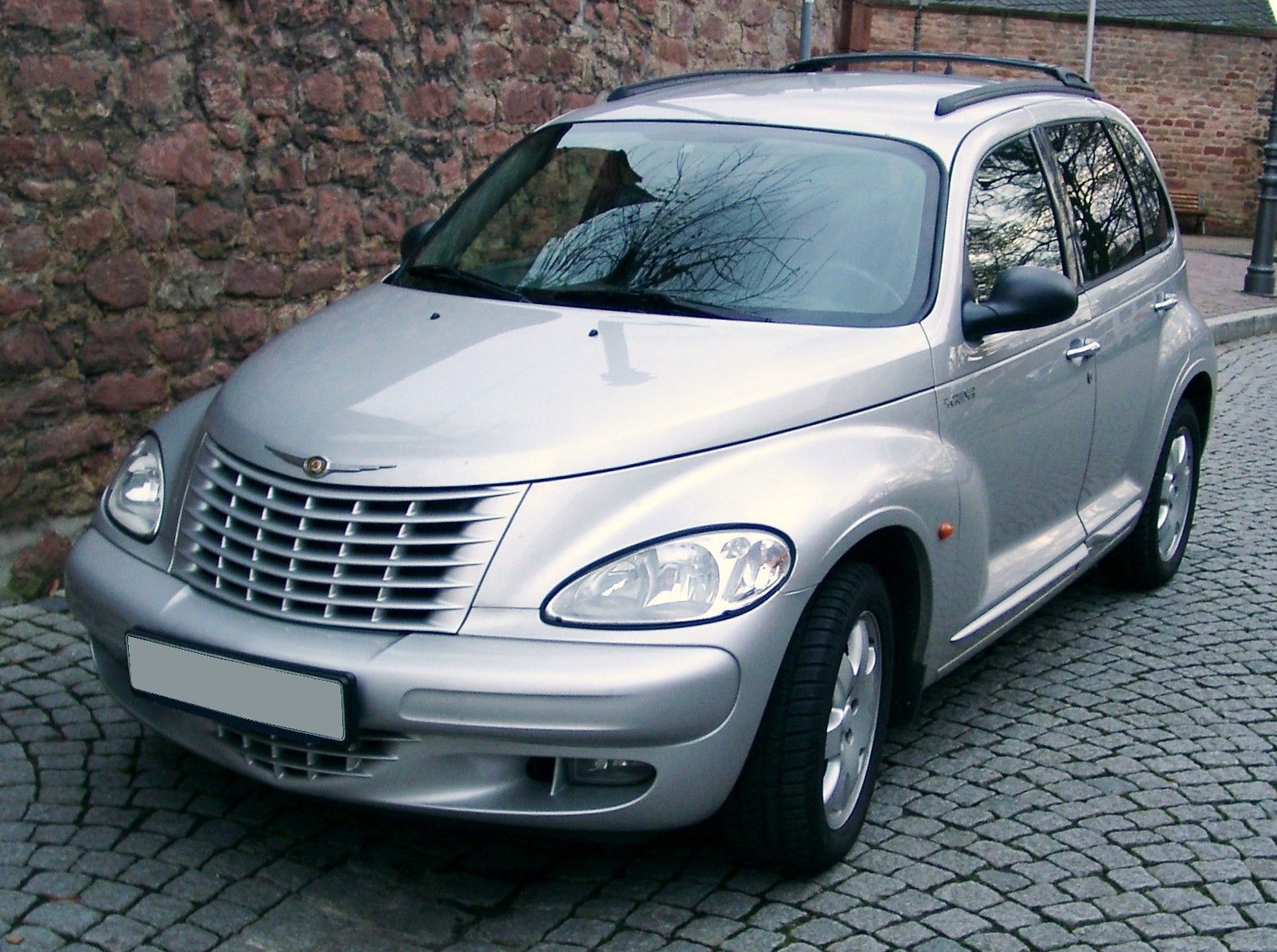
12. **Chrysler PT Cruiser**Alright, let’s talk about the Chrysler PT Cruiser, which burst onto the scene in 2000 looking like a funky, reimagined 1940s panel van. And guess what? People went wild for it! There was soaring early demand, and Chrysler literally couldn’t build them fast enough at first. It was a daring design, a truly unique blend of retro aesthetics and modern utility that captured the imagination of many.
For a good chunk of the 2000s, the PT Cruiser was everywhere. It was a car that didn’t blend in; it stood out, offering a distinctive style that appealed to those who wanted something different from the typical sedan or SUV. Chrysler eventually caught up to the demand, churning out over 1.3 million units. It was a car that embodied a moment when designers were willing to take big, bold risks.
Yet, by 2010, the party was over. Changing tastes and the relentless march of automotive design meant that the PT Cruiser’s run officially ended. What was once seen as quirky and cool eventually became, for many, simply outdated or even polarizing. Driving one now feels less like making a statement and more like inhabiting a time capsule that hasn’t quite aged gracefully. Its unique styling didn’t translate into timeless appeal, making it a car that few seek out today.
Car Model Information: 2024 Genesis GV70 2.5T AWD
Name: Chrysler PT Cruiser
Manufacturer: Chrysler
ModelCode: PT,PG
Production: 2000–2010
ModelYears: 2001–2010
Assembly: Toluca, Mexico State
Designer: Bryan Nesbitt
Class: Compact car
BodyStyle: convertible
Platform: Chrysler PT platform
Related: Dodge SRT4,Dodge Neon
Predecessor: Dodge Neon
Successor: Lancia Delta#Third generation
Layout: Front-engine, front-wheel-drive layout
Engine: ubl
Transmission: Ultradrive#40TE
Wheelbase: 103 in
Abbr: on
Length: 168.8 in
Width: 67.1 in
Height: 63 in
Weight: 3123 lb
Categories: 2010s cars, All articles with unsourced statements, Articles with short description, Articles with unsourced statements from March 2018, Cars discontinued in 2010
Summary: The Chrysler PT Cruiser is a compact car that was built by the American company Chrysler from 2001 until 2010. Introduced as a five-door hatchback wagon, a two-door convertible variant was also made from 2005 until 2008.
Originally planned as a Plymouth model, the PT Cruiser was ultimately marketed as a Chrysler when Plymouth was discontinued. Intended to invoke 1930s aesthetics, the exterior of the PT Cruiser was designed by Bryan Nesbitt. The model received an intermediate facelift for the 2006 model year. Interior packaging was noted for its high roof, high h-point seating, and flexible cargo and passenger configurations enabled by a multi-level rear cargo shelf and rear seats a user could fold, tumble, or remove.
The PT Cruiser was produced in Mexico and Austria at the Toluca Car Assembly and Eurostar Automobilwerk factories. By the end of production in July 2010, worldwide production had reached 1.35 million.
In its nameplate, PT stands for “Personal Transport” or “Personal Transportation”. PT was the PT Cruiser’s product code for the Mexican-made units.
Get more information about: Chrysler PT Cruiser
Buying a high-performing used car >>>
Brand: Chrysler Model: PT Cruiser
Price: $39,995 Mileage: 20,074 mi.
Read more about: Inside Jordan Spieth’s Curated Garage: A Deep Dive into the Golfer’s Luxurious Yet Practical Car Collection and Dallas Estate
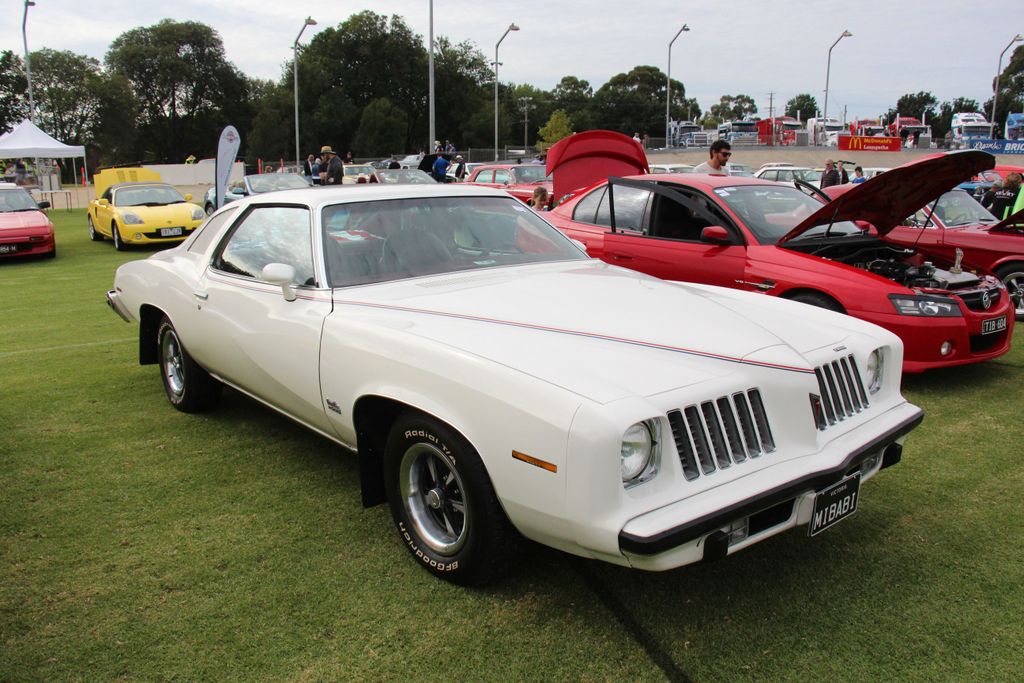
13. **Pontiac Grand Am**From 1973 to 2005, the Pontiac Grand Am was defined by being “affordable but beautiful,” appealing to millions of young drivers across its five generations. It successfully paired sporty styling with economy pricing, a winning combination that made it a very popular choice for those looking for a car that was both practical and had a bit of an edge. It was the kind of car you saw everywhere, from high school parking lots to college campuses.
The Grand Am was a workhorse for Pontiac, a high-selling nameplate that kept the brand relevant for decades. However, its long and storied run eventually came to an end in 2005 when General Motors made the decision to replace it with the Pontiac G6. This transition marked the official close of a significant chapter for Pontiac, signaling a shift in their lineup.
Today, while the Grand Am might stir some nostalgic feelings, it’s largely impractical for modern driving. Its safety features and overall technology are significantly behind contemporary standards, and its older mechanicals can be a reliability gamble. Add to that the fact that the Pontiac brand itself is gone, and you’re looking at a car that’s difficult to get parts for and simply doesn’t measure up to the efficiency or refinement of today’s vehicles.
Car Model Information: 2024 Genesis GV70 2.5T AWD
Name: Pontiac Grand Am
Manufacturer: Pontiac (automobile)
Production: 1973–1975,1977–1980,1984–2005
BodyStyle: fastback,notchback,fastback,notchback
Predecessor: Pontiac LeMans,Pontiac Phoenix,Pontiac Tempest#Third generation 1987–1991
Successor: Pontiac G6
Categories: 1980s cars, 1990s cars, 2000s cars, All articles with dead external links, Articles with dead external links from May 2016
Summary: The Pontiac Grand Am is a car model that Pontiac Division of General Motors produced in various years between 1973 and 2005. The first and second generations were RWD mid-size cars built on the LeMans GM A platform. The Grand Am name was reused for a FWD compact car for the third- and fourth-generations. The fifth-generation versions was enlarged to a mid-size car.
The platform began development intended to be the next generation GTO, but the muscle car era was drawing to a close. Pontiac decided to make this model America’s answer to European luxury sports sedans. The Grand Am name was derived from two other Pontiacs; “Grand” signifying Grand Prix luxury, and “Am” for Trans Am performance.
The first generation Grand Am featured innovations that included a deformable urethane nose (an evolution of the “Endura” bumper pioneered on the 1968 GTO) and was one of only three GM cars (Olds Cutlass Salon, Chevy Monte Carlo S) to debut radial-ply tires (RTS – Radial Tuned Suspension) as standard equipment. The intermediate sized Grand Am was canceled in 1980 when it was replaced by the Pontiac 6000.
A compact-sized Grand Am, based on the GM N-platform, was released in 1985, replacing the Pontiac Phoenix. It became Pontiac’s best selling car and was later replaced by the Pontiac G6, so named as it was intended to be the 6th generation of the Grand Am.
All 1973 through 1975 Grand Ams were built in Pontiac, Michigan at Pontiac’s main assembly plant. The 1978-1980 Grand Ams were built in Pontiac, Michigan at Pontiac’s main assembly plant and in Atlanta, Georgia at GMAD Lakewood. All Grand Ams between 1985 and 2005 were built in Lansing, Michigan at the Lansing Car Assembly.
Get more information about: Pontiac Grand Am
Buying a high-performing used car >>>
Brand: Pontiac Model: Grand Am
Price: $39,995 Mileage: 20,074 mi.
Read more about: Over 300,000 Vehicles Recalled: A Comprehensive Guide to Recent Safety Notices from Range Rover, Ford, and Nissan
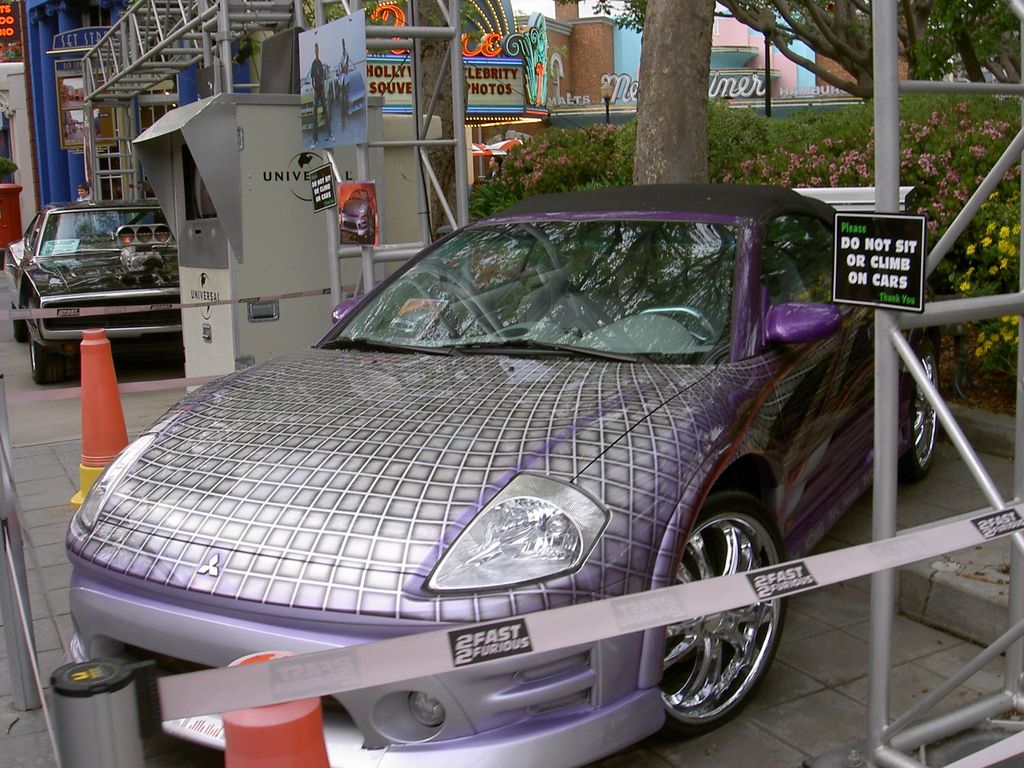
14. **Mitsubishi Eclipse**For anyone who grew up in the 90s and early 2000s, the Mitsubishi Eclipse was an absolute icon. Starting in 1989, thanks to its turbocharged engines and agile styling, it quickly became a tuner’s dream. It even shot to movie fame, getting a starring role in ‘The Fast and the Furious,’ cementing its status as a cool, accessible performance car for a generation of enthusiasts.
The Eclipse was more than just a car; it was a canvas for customization, a symbol of affordable Japanese performance. It represented an era where you could get a sporty, fun-to-drive coupe without entirely breaking the bank. For over two decades, it carved out a strong niche for itself among those who valued spirited driving and distinctive looks.
However, the chapter for the Mitsubishi Eclipse officially closed after 2011, marking the end of an era for sporty, affordable Japanese coupes in the U.S. While its legacy as a tuner icon lives on, driving one today means dealing with outdated performance, safety standards, and the general wear and tear that comes with a vehicle of its age. Modern performance cars have simply evolved so much that the once-agile Eclipse now feels like a charming but slow relic of a bygone era.
Car Model Information: 2023 Mitsubishi Eclipse Cross SE
Name: Mitsubishi Eclipse
Caption: Fourth-generation Mitsubishi Eclipse GS coupe
Manufacturer: Mitsubishi Motors
Production: 1989–August 2011 (906,876 units)
ModelYears: 1990–2012
Assembly: Normal, Illinois
Class: Sport compact
BodyStyle: liftback,coupé
Layout: Front-engine, front-wheel-drive layout,Front-engine, four-wheel-drive layout
Predecessor: Mitsubishi Cordia,Mitsubishi Starion
Categories: 1990s cars, 2000s cars, 2010s cars, All-wheel-drive vehicles, All articles with unsourced statements
Summary: The Mitsubishi Eclipse was a sport compact car manufactured and marketed by Mitsubishi over four generations in the 1990–2012 model years. A convertible body style was added during the 1996 model year.
The first two generations were marketed simultaneously as rebadged variants, including the Eagle Talon and Plymouth Laser — and were a byproduct of Mitsubishi Motors and Chrysler Corporation’s close alliance. Their partnership in turn gave rise to Diamond-Star Motors (DSM). In Japan, the first two generations were sold at a specific Japanese retail chain called Mitsubishi Car Plaza. The third, 2000–2005 generation shared an extended wheelbase variant of their platform with the Chrysler Sebring and Dodge Stratus. In May 2005, the fourth, and final generation Eclipse was introduced, replacing the Chrysler platform used for the third generation with the PS platform.
According to Mitsubishi, the Eclipse was named after an unbeaten 18th-century English racehorse that won 18 races in a row and then retired.
At the end of August 2011, the final Eclipse was manufactured and auctioned for charity.
In 2017, Mitsubishi resurrected the Eclipse name on a compact crossover vehicle, called the Eclipse Cross.
Get more information about: Mitsubishi Eclipse
Buying a high-performing used car >>>
Brand: Mitsubishi Model: Eclipse
Price: $20,900 Mileage: 49,516 mi.
Read more about: 18 Underrated Sports Cars: Hidden Gems Offering Surprising Performance & Value
And there you have it, folks! From the fleet-dominating behemoths to the quirky-styled darlings and the sporty icons of a past generation, these cars truly ruled the roads back then. They were the vehicles of our dreams, our first rides, or the ones that simply filled every parking lot. But as we’ve seen, time, technology, and even the unfortunate fate of entire car brands have a way of changing things. What was once a symbol of cool or practicality can, with a little distance, become a car you’d rather just look at in a vintage photo. So next time you’re cruising in your sleek, fuel-efficient, tech-packed modern ride, take a moment to appreciate how far we’ve come – and maybe give a little nod to these unsung, and largely unseen, automotive heroes of yesteryear. It’s been a wild ride down memory lane, hasn’t it?


